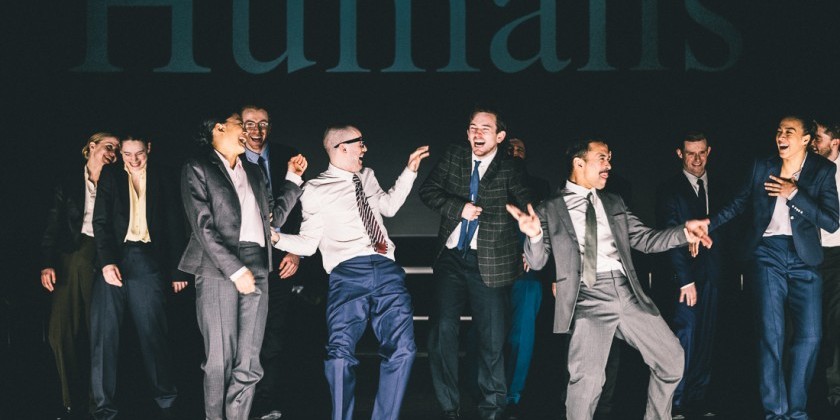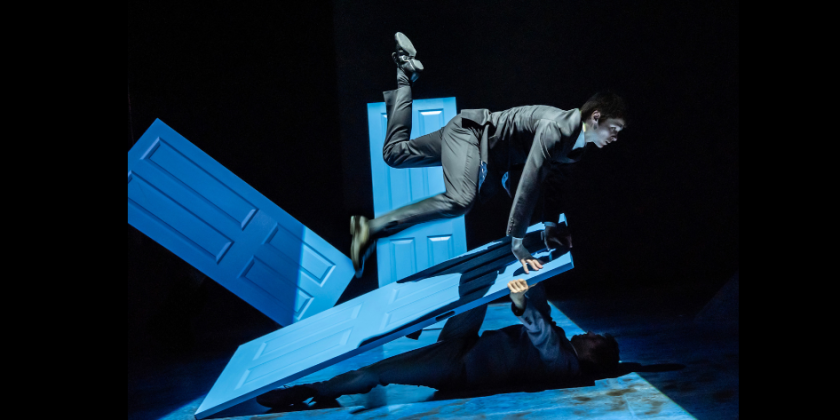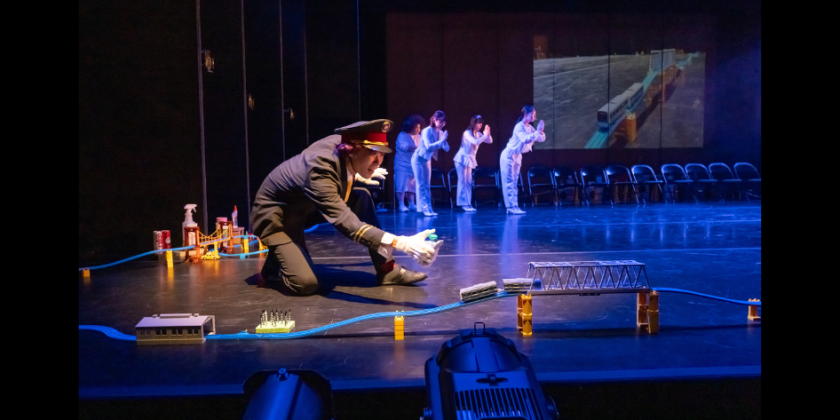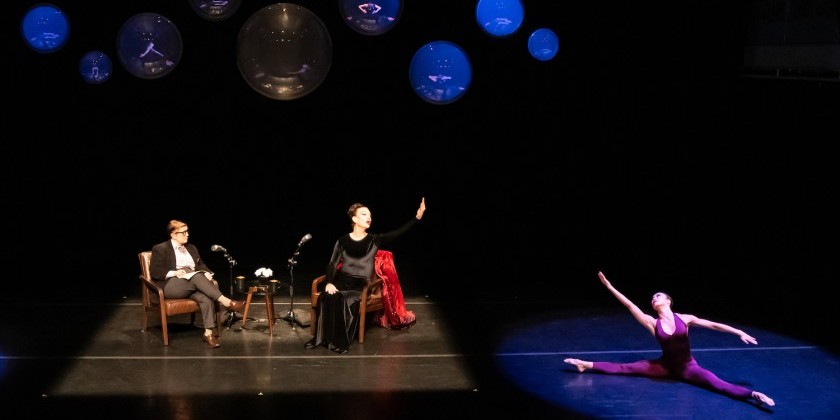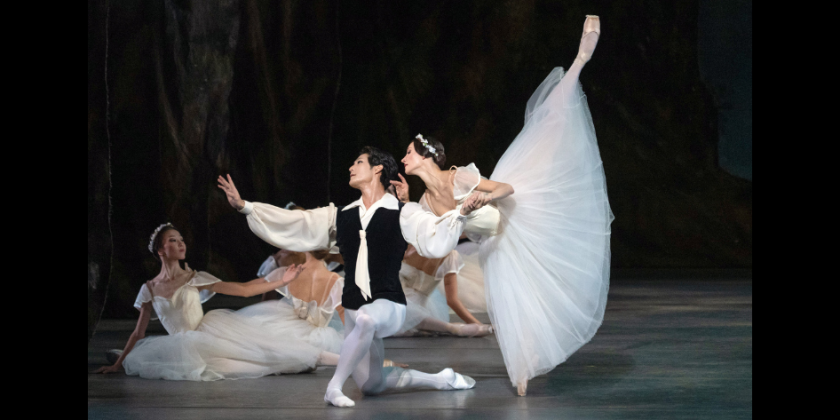IMPRESSIONS: Paul Taylor Dance Company Presents Revivals & Favorites at The Joyce Theater

Paul Taylor Dance Company
Founding artistic director: Paul Taylor
Artistic director: Michael Novak
Resident choreographers: Lauren Lovette, Robert Battle
Rehearsal directors: Bettie De Jong, Cathy McCann
Principal lighting designers: Jennifer Tipton, James F. Ingalls
Principal set and costume designers: Santo Loquasto, Alex Katz
Executive director: John Tomlinson
Dancers: Madelyn Ho, Kristin Draucker, Lee Duveneck, Alex Clayton, Devon Louis, John Harnage, Lisa Borres Casey, Jada Pearman, Shawn Lesniak, Jake Vincent, Jessica Ferretti, Austin Kelly, Kenny Corrigan, Gabrielle Barnes, Emmy Wildermuth, Elizabeth Chapa, Payton Primer, Caleb Mansor
Venue: The Joyce Theater
Dates: June 17 - 22, 2025
The late choreographer Paul Taylor had genius to spare, and left his Paul Taylor Dance Company with more masterpieces than it can keep in active repertory. In recent years, the troupe’s artistic director, Michael Novak, has made a point of resuscitating dances long out of view. Presenting these revivals as part of the Taylor company’s summer seasons at The Joyce Theater is a clever move, as the old-new dances are guaranteed hits — more of a draw now than its overhyped premieres.
This season’s Joyce engagement, June 17 to 22, featured two such revivals: a fascinating and seemingly pivotal duet called Tablet (1960); and an unsettling ensemble piece called Churchyard (1969). Both feel like wondrously fresh discoveries.
Tablet stars a pair of mechanical lovers in complementary white-face masks (Kristin Draucker and Devon Louis), who draw apart and come together again, finding ingenious new ways to connect. Their costumes, by painter Ellsworth Kelly, suggest stylized representations of male and female anatomy: a black wedge adorns the man’s chest, while a red saddle emphasizes the woman’s curves. The movement is similarly pared down, often following a sideways track outward from the center and back again, with bodies and limbs bent at sharp angles.
Despite this formalism, Tablet is not without hints of Taylorish humor. While the man appears workman-like and stolid, the woman draws sly circles on the floor with ronds de jambe, and scratches her leg with one foot. Though she may kneel at the man’s feet, Taylor illustrates her vanity in a moment where the man becomes her boudoir furniture — perched on his hands, she admires herself in an imaginary mirror and uses his upturned legs as a table. Other clever lifts seem purely acrobatic, allowing both the choreographer and his dancers to show off.
Taylor was 30 years old when he choreographed Tablet, an artistic hybrid, which, in retrospect, seems to place him at a fork in the road with signs pointing in different directions. Moving ahead, he could have taken the path that led to greater simplicity and abstraction, or he could have opted for more full-bodied drama. While the Cold War fashions of the 1960s urged him to abandon theatricality, his own inclinations and good sense led him to reject artistic orthodoxies. Taylor chose the highroad, which not only would make him popular, but also would allow him to elaborate his own, humanistic philosophy.
Taylor’s lifelong study of human nature led him, over and over, to reflect upon the warring tendencies within us — the loving impulse that glows in Arden Court and the insane violence that horrifies in Big Bertha; the rational symmetries of Cascade versus the chaotic terror of Last Look. Those dances represent the opposite poles of our experience, but many of Taylor’s finest dances (including those on view this season) hinge on such dualism and profit from an internal contrast.
Churchyard exemplifies this trend, being divided into sections that Taylor characterized as “sacred” and “profane.” Composer Cosmos Savage's riffs on medieval dance tunes, supplemented with thunder, and Taylor’s astute borrowings from the aristocratic processionals of the basse danse create a faux-historic milieu, in which the shift from order to chaos may also remind viewers of the fickle wheel of fortune in Carmina Burana. Tall Elizabeth Chapa plays a hierophant or abbess. Her hands pressed together as if in prayer, she presides over the slow and stately evolutions of the “sacred” part, as male and female cadres integrate in orderly patterns, the men kneeling and supporting the women. Couples lie down together, and the men place a hand on their partners’ shoulders tenderly laying claim to possession. Lively and mischievous flirtations ensue, signaling a change in tone; and, sure enough, we are now on the downward slope, though the couples who face each other in a waltz still appear genteel.
In the “profane” section, however, the women exchange serene, sky-blue costumes, and the men their simple pants for leotards in shades of earth and stone. These “profane” outfits have weird protuberances that seem to anticipate the lumps and bumps of fashion designer Rei Kawakubo's “Body Meets Dress, Dress Meets Body” show, aka the “Quasimodo collection,” nearly 30 years later. Now the movement becomes looser, with dancers rolling their hips and making stealthy, snatching gestures. The women hang upside down from their partners’ shoulders, or mount the men as they prop themselves up in a bridge. Things get wilder, with the men scrabbling and the women tossing their long, braided hair, until Churchyard becomes a regular Walpurgisnacht that ends with the exhausted celebrants dragging themselves off-stage. Lisa Borres Casey and John Harnage throw themselves into the savagery with fierce energy, and look like they’re having fun.
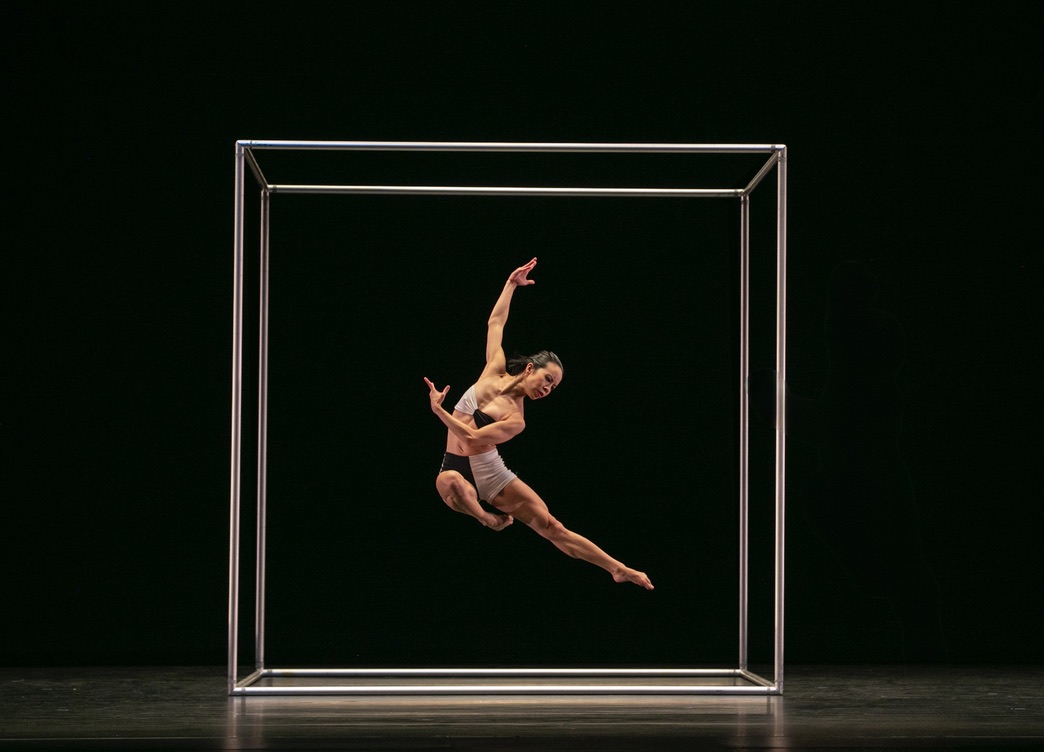
By the time he made Polaris, in 1976, Taylor the former varsity swimmer was ready to dive into the intellectual deep end. So, while this amazing collaboration with designer Alex Katz, composer Donald York, and lighting designer Jennifer Tipton features Taylor’s trademark twisting leaps and unbound athleticism, its real point is to tease our brains. Provocative Polaris reveals how the theater seduces us, and questions how we perceive reality itself.
The Minimalist setup is a hollow cube made of metal tubing, in which two casts of five dancers execute the same choreography, one group immediately following the other. While the first rendition is sunny, the second is set to angst-ridden music, with silvery lighting against a black backdrop, and is performed with a feverish intensity. Thus, in the two halves of this dance, the same movements look either joyous or threatening. Taylor shows us how our emotions affect our perceptions, and how easily our minds can be manipulated (even when we know we’re being manipulated). Evidently, Taylor was concerned with the ruses of his own métier, but if we go a little further and ask ourselves how these emotionally driven brains of ours might be affected by propaganda and political theater, then the implications for society are alarming.
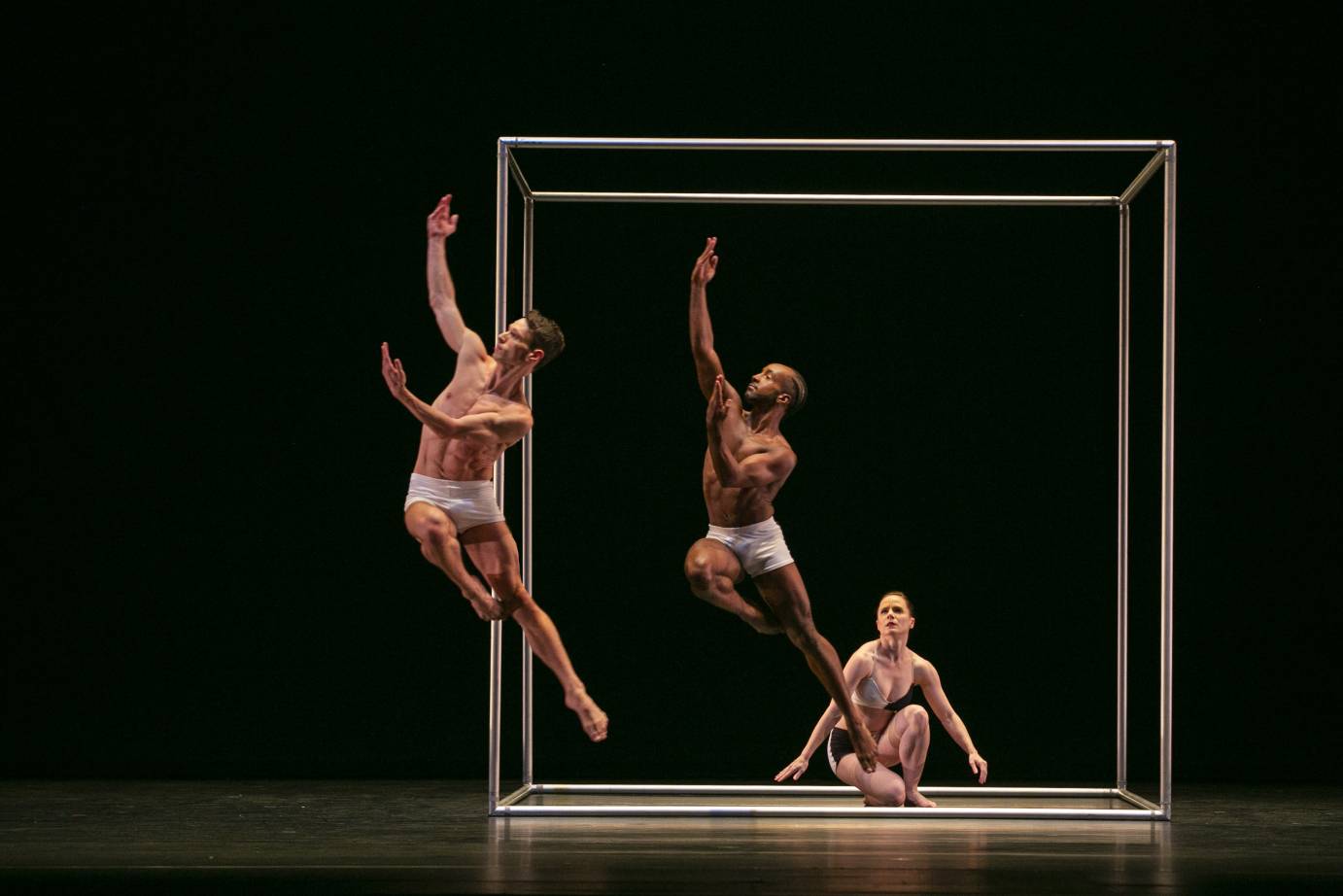
The Polaris cube has no physical walls, but the dancers pretend it does, reaching out to touch the empty space with a flat palm. The gesture feels either hopeful or fearful, as the performers seem to yearn for an alluring prospect, or communicate the sense that they are trapped. When Taylor takes this gesture outside the box, it suggests that the whole, physical world around us may be no more than an illusion.
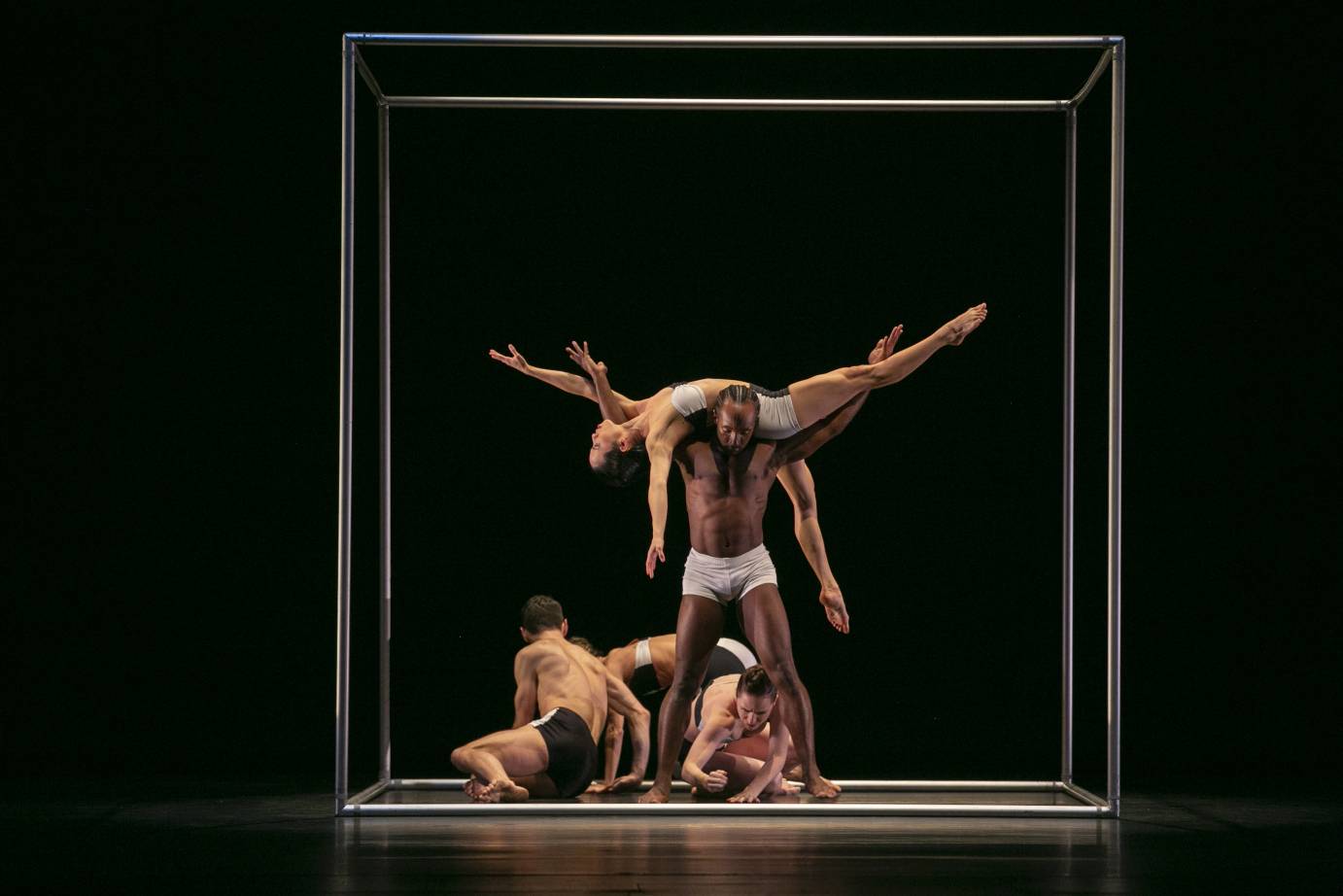
With its dense traffic within the cube, Polaris may be regarded as a satire of Minimalism, but it is dead serious in comparison with Cloven Kingdom, where Taylor plays another dichotomy for laughs. He created these two pieces in the same year. Polaris takes an almost clinical look at emotion, while Cloven Kingdom jokingly portrays what we might call “animal spirits,” contrasting animalistic behavior — leaps with rounded backs and legs drawn up, rhythmic fist pounding, and totemic groupings — with swanning gestures for ladies in evening gowns. The music toggles back and forth between Baroque strings and percussion.
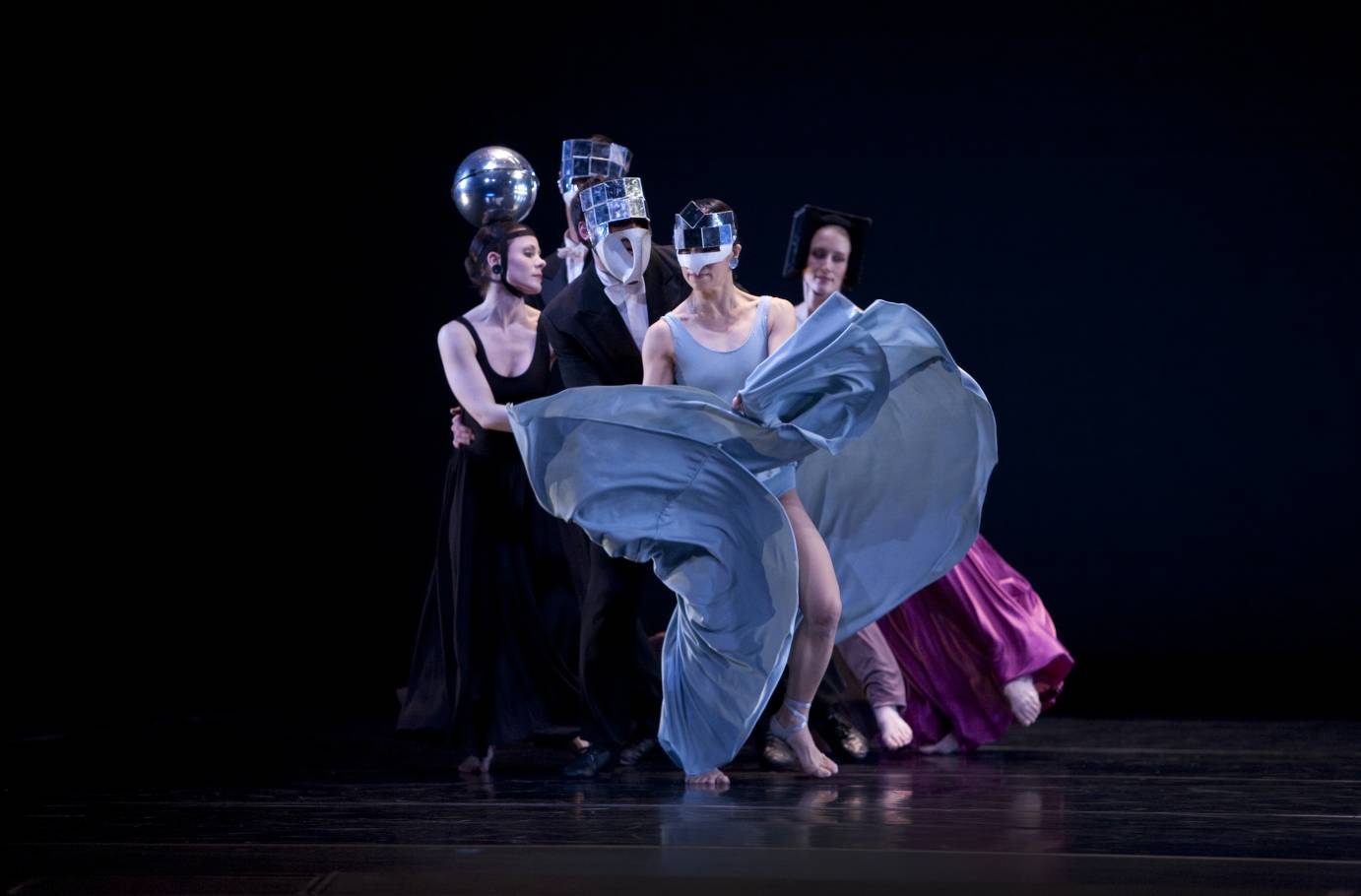
The gents wear tuxedos, but shuffle rapidly with bent knees, their hands hanging limply in front of them. They seem alternately affected and crude. Some of the women wear geometric, mirrored headpieces, which make them resemble scientific instruments, and suggest the ultimate in rational thinking. Ironically, however, Taylor has a couple of the mirrored ladies echo the rambunctious steps of the men’s section; and you have to wonder why one of these ladies has to crawl between the other’s legs as they swish together across the floor. (Taylor loves to give his characters side-kicks.)
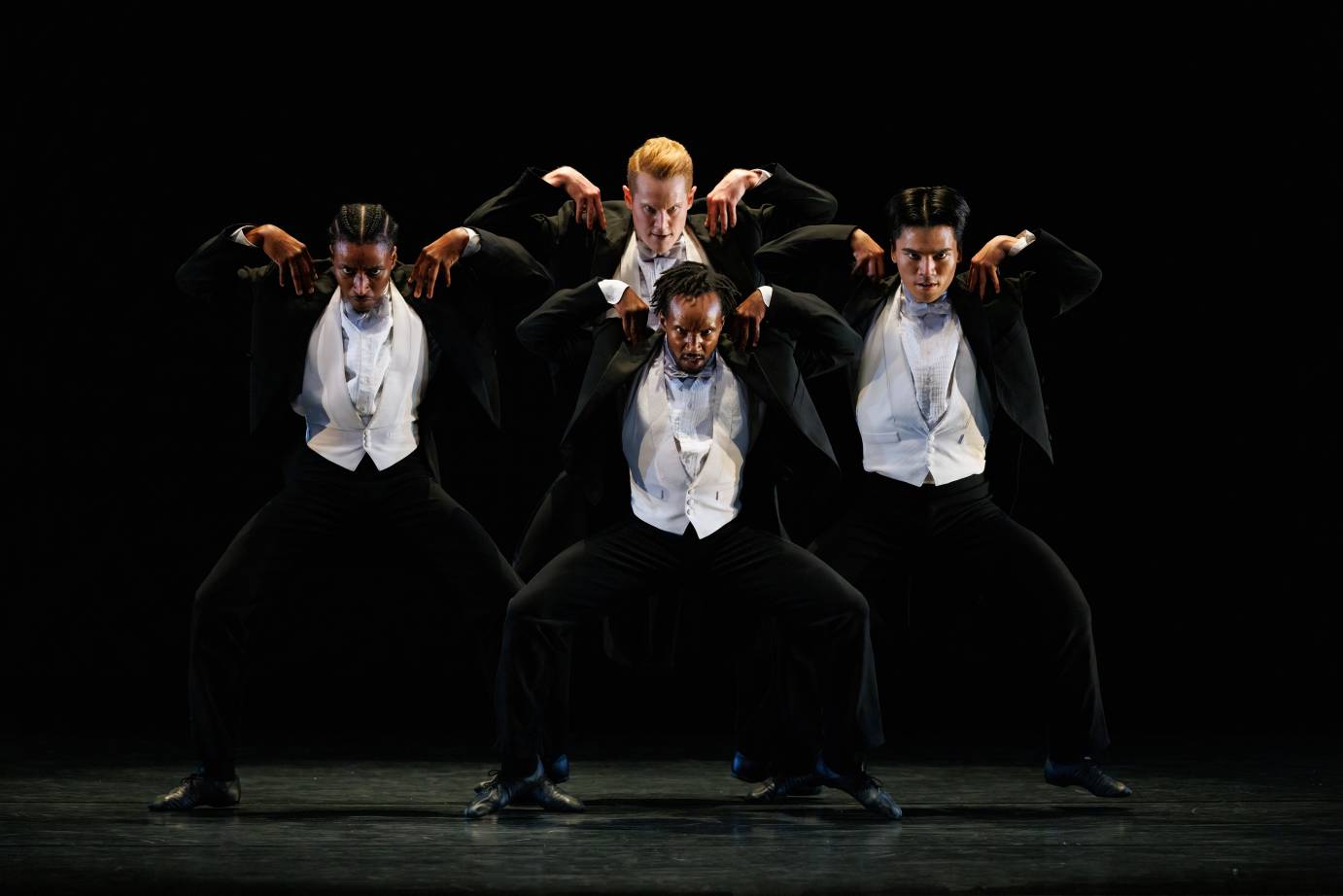
Polaris is split between two casts; but in Cloven Kingdom, each dancer is split. Taylor wishes us to know that a contradiction lives inside each human being, which explains a lot about us. As the piece builds in excitement, the dancers don mirrored masks (this almost 50 years before “transhumanism” became a trendy topic), and the stage becomes a mad ballroom featuring social dancing and a conga line. It’s easy to see why this boisterous send-up of humanity’s pretensions is one of the company’s all-time favorites.
The final masterpiece on offer this season, Esplanade, is so famous that one is tempted to speak of it in hushed tones. The opening section for pedestrians who walk with a casual lilt in their step, abruptly changing directions to confound our expectations, is such a tease, however, that reverence will never do. The obvious duality here contrasts this sprightly opening and the go-for-broke finale with a dramatic central section that hints at fatal encounters and broken relationships. Here a woman in pants is racked by jagged sobs, and the cast forms a trail of suffering humanity crawling through the darkness on its hands and knees.
Evidently, this contrast makes Esplanade more interesting than it would be if the piece were a simple romp; yet what makes Esplanade truly great is the way that Taylor intentionally, and oh-so-mischievously, turns the anti-theater polemics of the 1960s on their head. Taking the simple, everyday movements (walking/crawling) that the radicals had championed, he weaves them into patterns and imbues them with sentiment, in effect, theatricalizing those elements that were supposed to spell the end of theatrical artifice. In the final section, the movements are more exaggerated, but still recognizable as belonging to the real world — fireman’s catches, sliding into home plate, rolling down a hill (minus the hill), skipping, and playing tag. Taylor employs a democratic, all-American vocabulary, but his effortless composition raises it to the level of art, while the dancers’ grace and their daredevil attack reflects the virtuosity of sports heroes. Esplanade represents an amazing synthesis, simultaneously embracing and defying the avant-garde and proving that showmanship still has a future.








